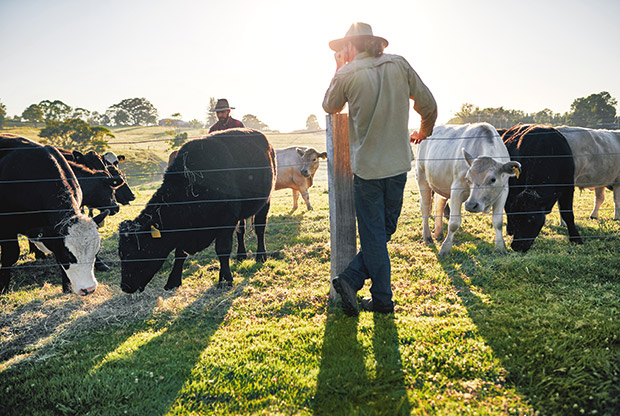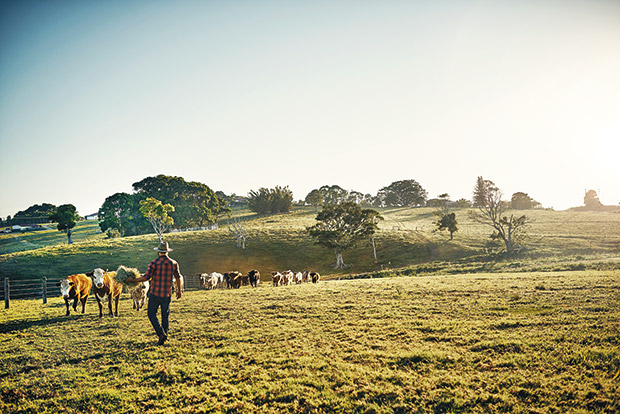3 things your stock will thank you for this winter

Healthy stock easily cope with the cold. But combine cold, wind, and rain, and stock can become stressed. Here are three ways to help them cope better in winter conditions.
Words: Nadene Hall
1. Minerals
Livestock can get almost all the nutrients they need from good quality pasture. But when stock come under stress, such as bad weather or from pregnancy, you’re more likely to see health issues caused by a deficiency. Various regions of NZ have soils with low mineral content. Most are free-draining, sandy, or gravelly soils, low in clay, oxide, and organic matter. Common deficiencies you may see include:
■ iodine, common in North Island pasture, especially during spring when stock need more due to the demands of lactation, and reproduction (in cattle);
■ copper in cattle, which can cause reduced growth rates, fertility and calf survival – zinc treatments for facial eczema can worsen a copper deficiency;
■ selenium, especially in lambs, causing poor growth rates, white muscle disease, ewe infertility, and poor quality sperm in rams;
■ magnesium in cattle, especially during late pregnancy and early lactation;
■ sodium, especially inland soils (eg, Central Plateau pumice, volcanic soils of the Waikato, King Country, inland Marlborough, Canterbury, Otago and Southland, and animals on kikuyu-dominant pasture;
■ cobalt, especially in pumice soils, which helps animals to synthesise vitamin B12, important for metabolism and growth.
Mineral ‘licks’ are one way to supplement an animal’s diet but won’t be enough to correct a serious deficiency. Another issue is some animals don’t touch them at all, while others take in more than they need. What should you do?
■ talk to your vet about known deficiencies in your area, and how to test for them; (many require a blood test or liver sample, best taken in early spring-summer);
■ what supplements may be required; (eg, injectable, bolus, drench, added o fertiliser);
■ choose pasture plants with high trace mineral levels, eg clover, chicory, plantain, lotus;
■ have several licks positioned around communal areas (eg, water troughs, trees), ideally in covered feeders to stop licks from hardening, or washing away.
2. Treat stock for lice
Lice populations on sheep and cattle are highest in winter. The heaviest infestations will be on the lightest/poorest conditioned animals and the youngest.
There are two basic types of lice, body/biting lice (which feed on skin debris), and sucking lice (which suck tissue fluid and blood). Sheep lice can only live and reproduce on sheep; cattle lice can only live and breed on cattle.What should you do?
■ treat lice on sheep when animals are shorn, ideally at the beginning of summer when lice numbers will be at their lowest, and again in autumn – shearing removes up to 80 percent of lice but should be immediately followed with a chemical treatment. Talk to your vet about the best options.
■ treat cattle in autumn – talk to your vet about the best treatment options.
3. Provide shelter & shade

Winter is the best time to plant trees for shelter, shade, and windbreaks. Research has found stock are less stressed, use less energy trying to stay warm or cool down, and have better growth rates and milk production if they have shade and shelter. What should you do?
■ plant shelterbelts on flat land at right angles to the prevailing wind;
■ on slopes, plant rows that run from top to bottom, to help cold air drain away;
■ young livestock like to lie up against dense, impermeable shelter plants, eg flax;
■ the best shelterbelts allow air to filter through, slowing (but not stopping) the wind for a distance up to 20 times the shelterbelt’s height. It encourages stock to graze a wide area, even during poor weather.
DID YOUR YOUNG STOCK GROW SLOWLY THIS YEAR?
Slow growth in lambs and young cattle is often due to ‘ill-thrift’. It’s caused by one or multiple factors, including poor quality pasture, parasites, and fungal toxicity (fusaria). NZ research shows 36 percent
of cattle and 62 percent of sheep will suffer from ill-thrift over summer-autumn.
The most common cause is poor pasture quality, followed by parasites, especially in sheep. What should you do?
1. Test pasture quality and soil, to see what you can improve this spring;
2. Talk to your vet about faecal egg counts, drench resistance, pasture management, and your stock levels.
ONE EASY WAY TO HELP STOCK STAY WARM
All stock (including poultry) will stay warmer if they’re digesting feed overnight. Offer supplements in the mid-to-late afternoon, particularly on rainy, windy days, which affect animals the most.
Love this story? Subscribe now!
 This article first appeared in NZ Lifestyle Block Magazine.
This article first appeared in NZ Lifestyle Block Magazine.
